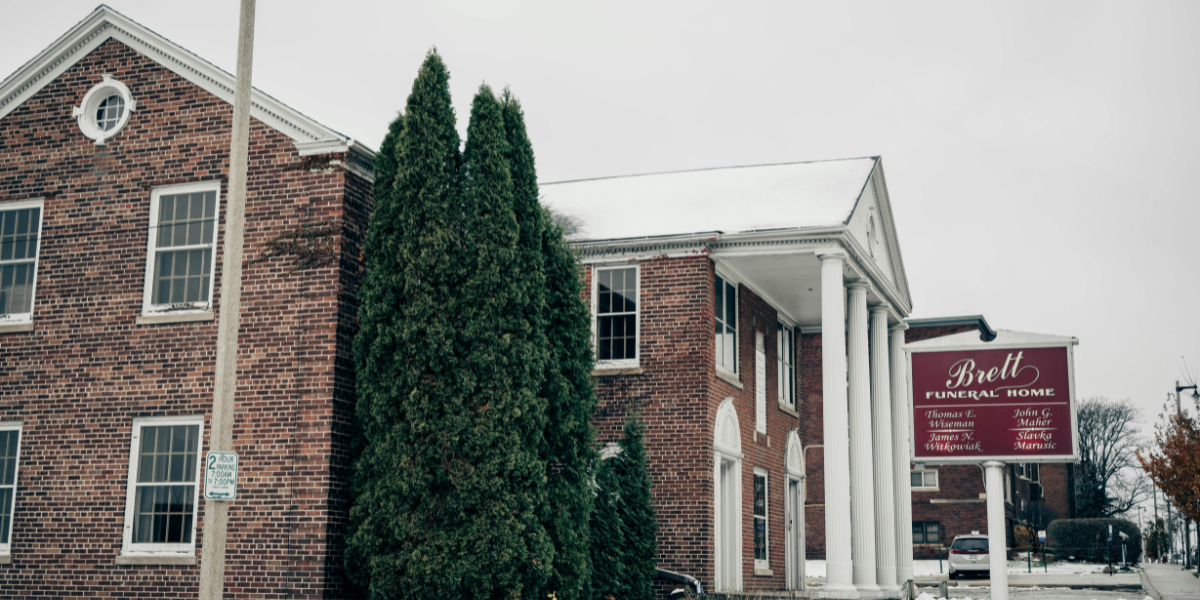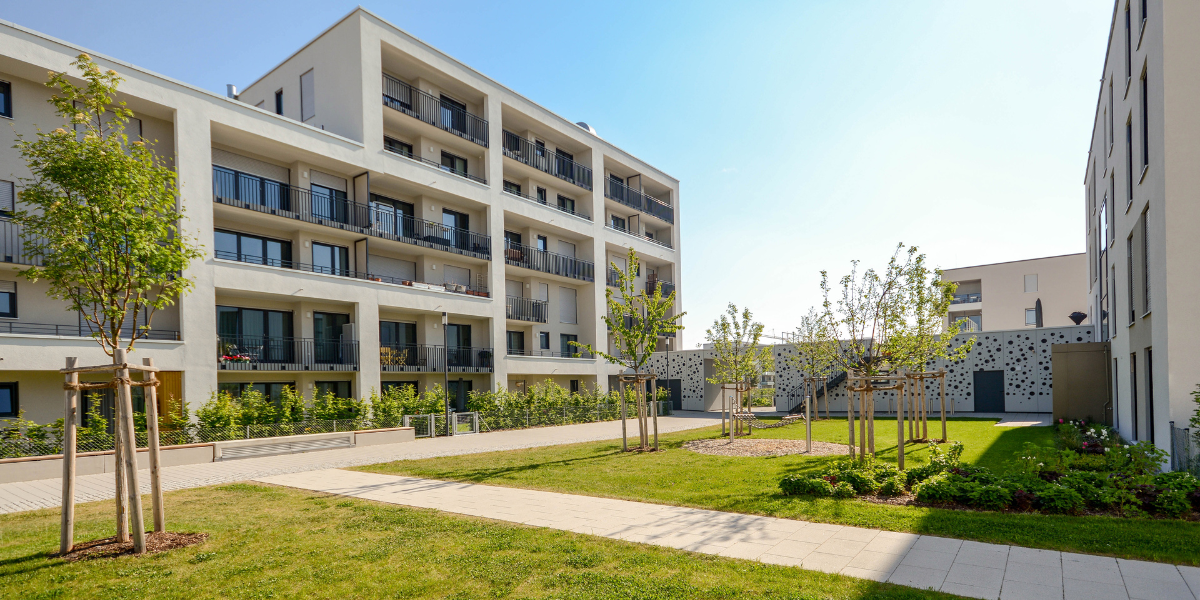Property Overview
This expansive self-storage facility, acquired in February 2019, features 89,901 square feet of climate-controlled storage space on a 209,960 square foot site. With a purchase price of $4 million (excluding land), this modern facility represents a significant investment in the growing self-storage sector. The property includes numerous specialized components typical of self-storage facilities, including climate control systems, security features, and storage unit configurations.
| Property Type | Self-Storage Facility |
| Purchase price(less land) | $4,052,325 |
| Building sqft | 89,901 |
| Entire site sqft | 209,960 |
| Data acquired | February 2019 |
| Tax year study applied | 2019 |
| Tax rate | 37% |
| Present value rate of return | 8% |
| Bonus depreciation | 80% |
Building Allocation After Study

Cost Segregation Study Benefits
CSSI’s engineering-based analysis identified approximately $1.17 million in assets qualifying for accelerated depreciation through 5- and 15-year property classifications. The study generated immediate tax savings of $413,025 in the first year, utilizing 80% bonus depreciation. The long-term financial impact is substantial, with a net present value of $336,704 over 10 years and potential future value of invested savings exceeding $3.2 million. This case study demonstrates how self-storage facilities can particularly benefit from cost segregation due to their unique construction features and specialized systems.
Financial Benefits Achieved
| Immediate Tax Savings | $ 413,025 |
| NPV Over 10 Years | $336,704 |
| NPV Over Remaining Life of Property | $275, 126 |
| Future Value of Invested Savings | $3,216,239 |
Request Your Complimentary Tax Savings Analysis
We’ll evaluate your specific circumstances and provide a detailed estimate of potential tax savings across our service offerings. Complete the form to get started or scroll down to learn more about how our analysis benefits you.
More Case Studies
Frequently Asked Questions
What is the benefit of a Cost Segregation Study?
What is the benefit of a cost segregation study?
A Cost Segregation study reduces a building owner’s income taxes up to $100,000 for every $1 mill in building costs. The tax savings are anywhere from 3-10% of the building cost.
What is a cost segregation study?
What is a cost segregation study?
A cost segregation study is an engineering-based analysis that reclassifies commercial real estate components and improvements between real and personal property. This reclassification accelerates the depreciable lives from 27.5- or 39-years to 5-, 7-, or 15-years.
What real estate components can typically be accelerated through a cost segregation study?
What real estate components can typically be accelerated through a cost segregation study?
A cost segregation study can typically accelerate depreciation on many building components, including:
- Electrical installations (e.g., dedicated computer power, special lighting)
- Plumbing systems (e.g., kitchen plumbing, bathroom fixtures)
- HVAC components
- Flooring (e.g., carpet, vinyl, tile)
- Window treatments
- Cabinetry and countertops
- Decorative finishes and millwork
- Security systems
- Fire protection systems
- Parking lot paving and lighting
- Landscaping and site improvements
- Certain building exterior components
Does my property qualify for a cost segregation study?
Does my property qualify for a cost segregation study?
Your property likely qualifies if:
- It’s a commercial building or building improvements with a remaining depreciable basis
- The building or improvement cost basis is at least $200,000
- You anticipate holding the property for at least three years
When should a cost segregation study be done?
When should a cost segregation study be done?
A study can be completed in the year the building or improvements are placed in service. However, it can also be done on properties acquired or constructed since 1986 without amending prior years’ tax returns.
How long does a cost segregation study take?
How long does a cost segregation study take?
A cost segregation study typically takes approximately three to six weeks from the time we receive all the appropriate documentation.
What information is needed to complete a cost segregation study?
What information is needed to complete a cost segregation study?
Generally, we request:
- A current tax depreciation schedule
- Building cost information
- Blueprints or architectural drawings and renovation plans, if applicable
- Access to the property for an on-site inspection and walk-through
How much can I save with a cost segregation study?
Savings vary, but within the first five years of building ownership, owners could save up to $100,000 for every $1 million in building costs.
Will a cost segregation study trigger an audit?
No, a properly conducted cost segregation study has never triggered an audit. In fact, if you are audited for any reason and the study comes into question, CSSI will defend the audit at no cost.
Can a cost segregation study be done on buildings not yet constructed?
While a full study can’t be done on unconstructed buildings, CSSI can provide estimates on tax savings from your construction budgets. A full study will be delivered when construction is complete.
How much does a cost segregation study cost?
The cost of a cost segregation study typically depends on the size, type, and complexity of the property. For most commercial properties, the fee generally ranges from $2,500 and up. However, larger or more complex buildings, such as manufacturing plants, medical facilities, or multi-use commercial spaces may cost more due to the additional time and analysis required. Residential rental properties or smaller office spaces may fall on the lower end of the range.
That said, the true value of a cost segregation study lies in the tax savings it unlocks. Property owners often see tens or even hundreds of thousands of dollars in accelerated depreciation benefits, far outweighing the initial cost of the study.
Firms like CSSI provide tailored cost segregation studies for property owners across the U.S., focusing on maximizing ROI and ensuring IRS-compliant documentation. With experience across various industries and property types, CSSI helps businesses reduce their taxable income and improve cash flow, making the study a smart financial move.
How does cost segregation work?
Cost segregation works by identifying and reclassifying certain components of a commercial or income-producing property into shorter depreciation categories. Instead of depreciating the entire building over 27.5 or 39 years, cost segregation separates qualifying assets such as flooring, lighting, cabinetry, and landscaping into 5, 7, or 15-year categories. This allows property owners to accelerate depreciation and reduce taxable income in the earlier years of ownership.
The process begins with a detailed engineering-based analysis of the property. Experts evaluate construction costs, building plans, and asset details to determine which components can be depreciated faster under IRS guidelines. The result is a cost segregation report that can be used during tax filing to support accelerated depreciation claims.
Working with an experienced firm like CSSI helps ensure accuracy, compliance, and maximum benefit. CSSI handles the entire process from document review to final report, helping property owners unlock significant tax savings and improve cash flow.
This strategy is especially beneficial for newly acquired, constructed, or renovated properties, and often pays for itself within the first year through tax savings.
Is cost segregation worth it?
Yes, cost segregation is often well worth it, especially for commercial and rental property owners looking to improve cash flow and reduce tax liability. By accelerating depreciation on specific building components, property owners can significantly lower their taxable income in the early years of ownership. This can result in tens or even hundreds of thousands of dollars in immediate tax savings, depending on the property’s size and value.
Cost segregation is particularly beneficial for properties acquired, constructed, or renovated after 1987 and with a value of at least $150,000. The savings typically outweigh the cost of the study, often delivering a full return on investment within the first year through reduced tax payments.
Partnering with an experienced firm like CSSI ensures the study is done accurately, in compliance with IRS guidelines, and tailored to your property type. CSSI has worked with thousands of property owners across industries, helping them realize long-term financial benefits.
Can I do my own cost segregation study?
Yes, you can attempt to perform your own cost segregation study, but it is not recommended unless you have the expertise in engineering, tax law, and construction cost estimation. A proper cost segregation study involves a detailed analysis of building components, IRS classification rules, and accurate allocation of costs to shorter depreciation categories like 5, 7, or 15 years.
The IRS prefers engineering-based studies conducted by qualified professionals. A poorly executed DIY study may lack proper documentation or fail to comply with IRS standards, which could lead to audit risks, penalties, or disallowed deductions.
That’s why most property owners choose to work with experienced providers like CSSI. Our team includes engineers and tax specialists who deliver IRS-compliant studies that maximize your tax benefits while minimizing risk. We handle everything from property evaluation to final reporting, so you don’t have to navigate complex rules on your own.
If you want to unlock significant tax savings while staying compliant, it’s best to leave the study to professionals with a proven track record.
How much does cost segregation cost
The cost of a cost segregation study typically ranges from $2,000 to $15,000, depending on the size, complexity, and location of the property.
CSSI Services offers no-upfront-cost studies, where fees are based on project scope and potential tax savings. In most cases, the tax benefits far exceed the study cost, often returning 10x or more in savings within the first few years.
Can cost segregation offset w2 income
No, cost segregation cannot directly offset W-2 income. The deductions from a cost segregation study apply to passive income from rental or investment properties, not active income like wages or salaries. However, real estate professionals who qualify under IRS rules may be able to use depreciation deductions from cost segregation to offset W-2 income.
Can you do cost segregation on residential rental property
Yes, you can perform a cost segregation study on residential rental properties. The IRS allows property owners to break down building components into shorter depreciation categories, typically 5, 7, or 15 years, instead of the standard 27.5 years.
Is cost segregation going away
No, cost segregation is not going away. Although certain tax incentives tied to cost segregation (like 100% bonus depreciation) have changed based on legislation, the underlying practice of accelerating depreciation remains fully viable. Tax professionals confirm that cost segregation continues to provide value by shifting asset lives into shorter recovery periods.
Can you do cost segregation on primary residence
No, cost segregation cannot be done on a primary residence. The IRS only allows cost segregation studies on income-producing or business-use properties, such as rental real estate or commercial buildings.
How to apply cost segregation on tax return
To apply cost segregation on your tax return, you must first complete a cost segregation study by a qualified provider like CSSI Services. The study identifies assets that can be reclassified for shorter depreciation schedules.



